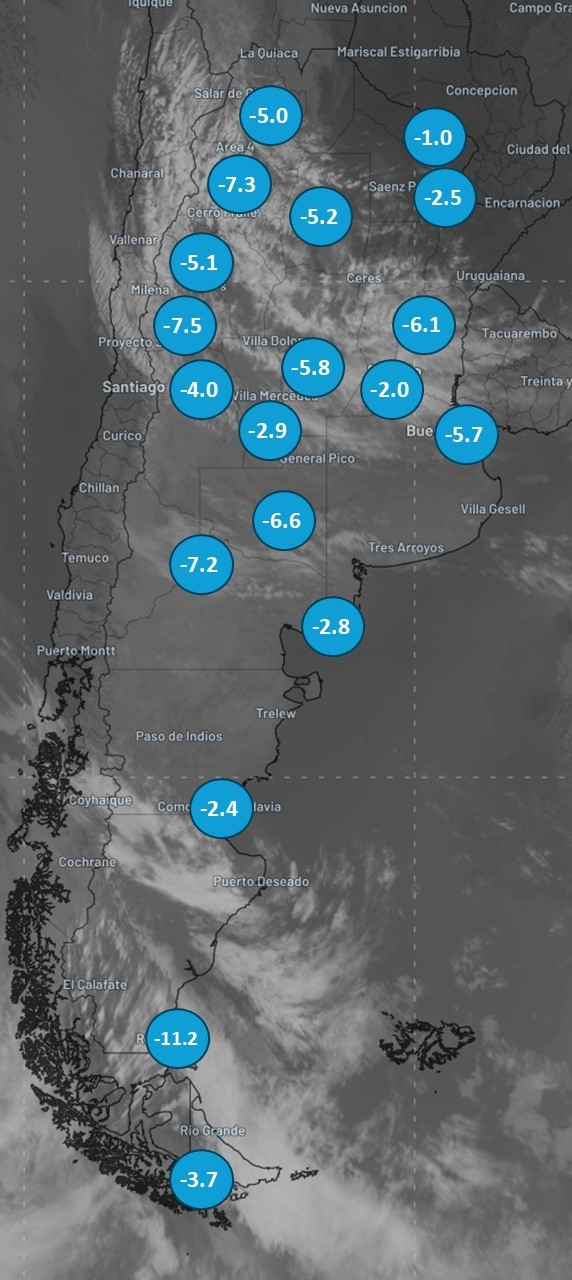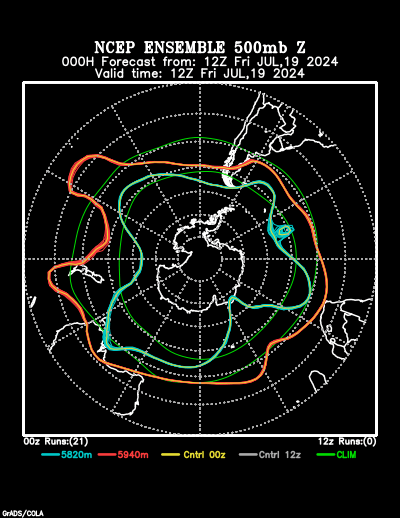Respite for Argentina after coldest July in a decade
It is no surprise that the southern provinces of Argentina are prone to harsh and cold winters, given that they are the closest land mass to the Antarctic. However, this winter has been exceptionally cold with polar waves being pushed to the far north of the country and into Bolivia.
The past fortnight has recorded negative temperatures for almost every Argentinian province:
- Buenos Aires’ capital of La Plata dropped to –5.7 degrees on the 10th of July
- Catamarca’s capital of San Fernando del Valle de Catamarca reached –7.3 degrees on the 11th of July
- Chaco’s capital of Resistencia dropped to –2.5 degrees on the 10th of July
- Chubut’s second capital of Comodoro Rivadavia dropped to –2.4 degrees on the 7th of July
- Cordoba dropped to –5.8 degrees on the 7th of July
- Entre Rios’ capital of Parana dropped to –2.0 degrees on the 9th of July
- Formosa dropped to –1.0 degrees on the 12th of July
- La Pampa’s capital of Santa Rosa dropped to –6.6 degrees on the 8th of July
- La Rioja dropped to –5.1 degrees on the 11th of July
- Mendoza dropped to –4.0 degrees on the 9th of July
- Neuquen dropped to –7.2 degrees on the 7th of July
- Rio Negro’s capital of Viedma dropped to –2.8 degrees on the 7th of July
- Salta dropped to –5.0 degrees on the 14th of July
- San Juan dropped to –7.5 degrees on the 9th of July
- San Luis dropped to –2.9 degrees on the 12th of July
- San Cruz’s capital of Rio Gallegos dropped to –11.2 degrees on the 6th of July
- Santa Fe’s second capital of Rosario dropped to –6.1 degrees on the 10th of July
- Santiago del Estero dropped to –5.2 degrees on the 13th of July
- Tierra del Fuego Antartida e Islas del Atlantico Sur’s capital of Ushuaia reached –3.7 degrees on the 6th of July
Altogether very cold, with some cities like La Plata seeing a record cold July, averaging 3.4 degrees below the monthly average.

Fig. 1) Map of Argentina showing the lowest recorded July 2024 temperature at various provincial capitals
Many images have been circulating the internet of frozen waves, rivers, streams and even animals, as the latest polar wave pushed the cold and dry Antarctic air over South America.
The good news is that this cold spell has come to an end, with polar jet being pushed further south and the hot northern air enveloping the region. Crazier than the extreme cold is the extreme heat this change is bringing. It’s actually being called a heat wave, as some locations in South America are receiving summer heat in the middle of July!
In Argentina, the cities of Formosa, Resistencia and Santiago del Estero peaked at 32.2, 33.0 and 27.0 degrees respectively yesterday (19th of July). Temperatures are expected to rise throughout the week before the northerly winds are cut off and cool southerly air filters back into the country’s northern half.
.png)
Fig. 2) Maximum temperature over Argentina in the past 24hrs (Servicio Meteolotogico Nactional Argentina, 2024)
As we see from Fig. 3), there is a peak in the polar jet in the Pacific Ocean, and when this moves clockwise towards South America, it may bring a chance of cooler temperatures once again, though uncertainty is still high at this time.

Fig. 3) A forecast of the current location of the polar jet (NOAA, 2024)